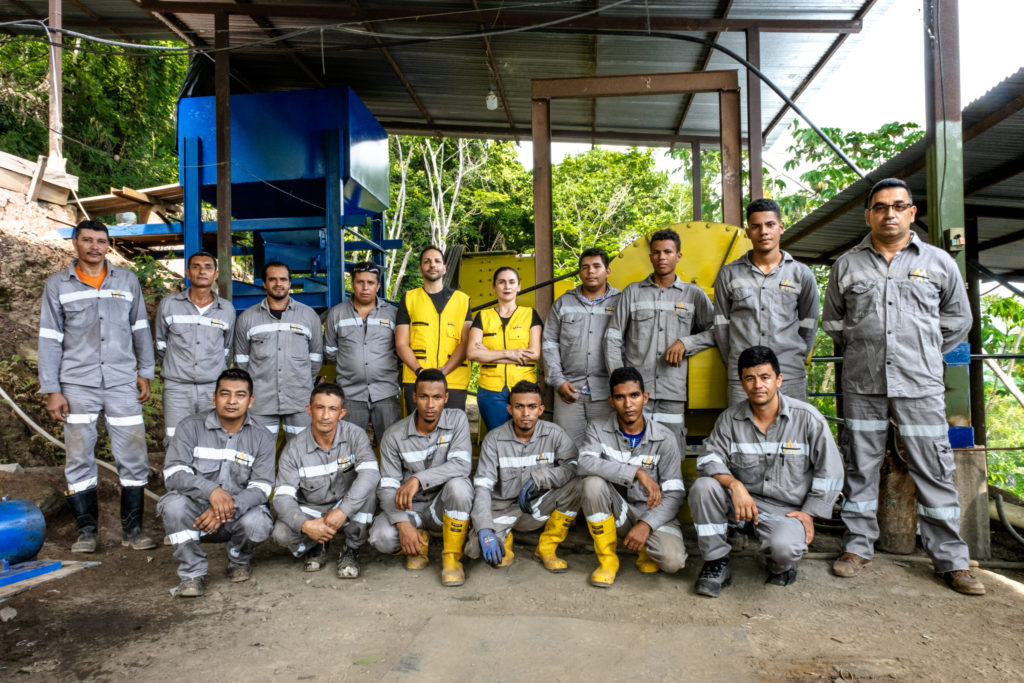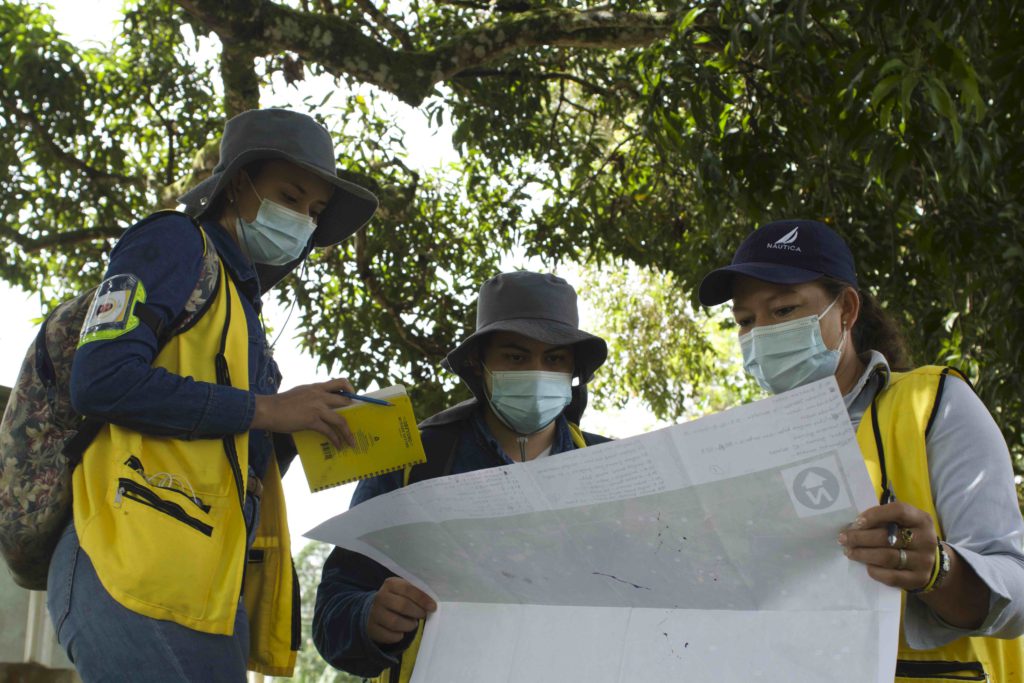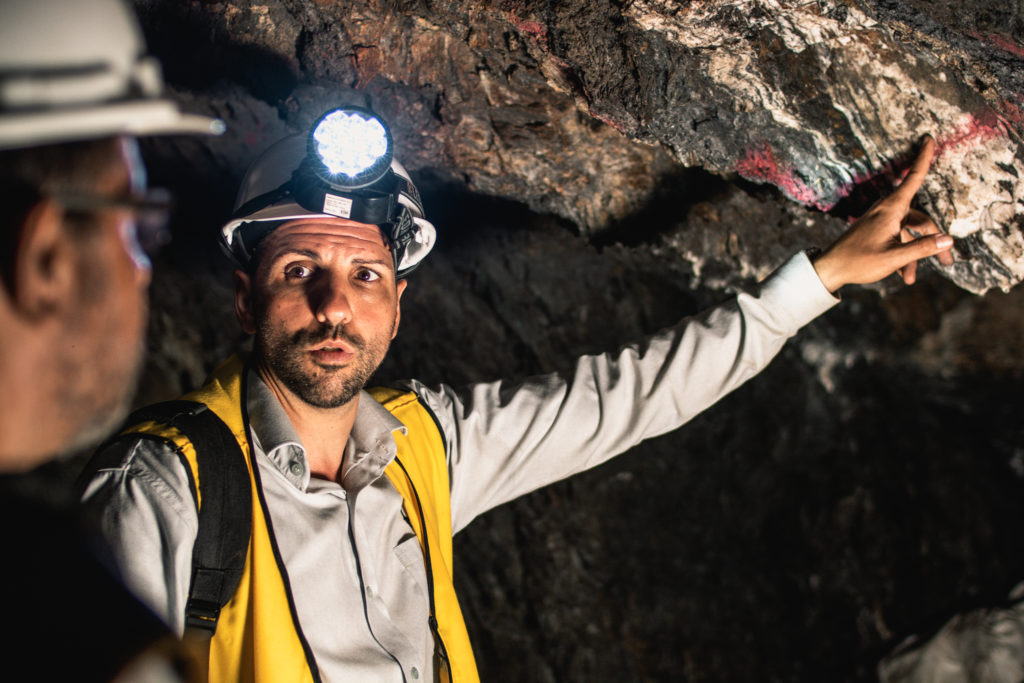JV Article: Baroyeca Gold and Silver dives into Colombia


This year has been transformative for Baroyeca Gold and Silver (TSX: BGS; US-OTC: BRYGF), the company says. The junior explorer has raised over $3 million in two private placements and acquired options on two previously under-explored projects in Colombia. The options, negotiated by Rick Wilson, the company’s CEO, bring with them an existing team in Colombia with decades of in-country experience.
In addition to the option agreements, the company has appointed as its president Raul Sanabria, who has 11 years of experience in Colombia; and nominated to its board of directors John Robins, the founder of the Discovery Group.
The private placements — $2 million in January and $1.68 million in April — mean the company is fully funded for its Phase 1 drill program.
Baroyeca’s two optioned projects in Colombia are Santa Barbara and Atocha. The Atocha project, 190 km west of Bogota, is located within Colombia’s historic colonial Santa Ana-Frias-Mariquita silver district, which is the highest grade primary silver district in Colombia. Santa Barbara is situated in the Bolivar department of northern Colombia, about 30 km north of Bucaramanga, the capital city of the Santander department.
Baroyeca finalized the options with Malabar Gold on both projects in January and paid $100,000 at signing. The Atocha project is subject to a 3.5% net smelter return (NSR) royalty payable to a third party, and $1.05 million in cash and the issuance of 5 million Baroyeca common shares payable to Malabar Gold over three years. The Santa Barbara project is subject to a 2.5% NSR, $1.75 million in cash and 7 million common shares. Baroyeca must also spend $500,000 on exploration in the first year.
Both the Atocha and Santa Barbara projects have registered valid mining titles. Under the Colombian Mining Act, projects can be explored for three years with up to four extensions of two years each for a total of 11 years. The Atocha project is currently in year one. The exploitation licence for exploration and construction is valid for 30 years and is renewable for 30 years.

The company plans to initially focus on the Atocha project. The property is district-sized at more than 2,600 hectares in the Santa Ana-Frías primary silver district, which is home to historic high-grade primary silver mines dating to the colonial period and has seen limited modern day exploration.
The Frías mine, less than 4 km from Baroyeca’s Atocha project, produced 4.4 million oz. of silver at an average grade of 10.8 kg/t silver from veins ranging from a few centimetres to over 6.1 metres in width between 1868 and 1902. The Frias mine extended to a depth of 320 metres. Production stopped in 1902 due to increasing costs. Other small historic mines on trend with Atocha include the El Gran Porvenir, El Oasis and El Papayo mines to the south and the El Cristo colonial mine to the north, forming a 20 km mineralized geological trend, where Atocha sits right in the centre and over the largest structural mineralized corridor, the company says.
With the exception of a brief gold-silver rush in the 1930s, the area saw almost no exploration until 2012, when Condor Precious Metals, then led by Sanabria, rediscovered the area and commenced surface mapping and prospecting. Exploration on a limited scale at the Atocha project started in 2013 with surface geological reconnaissance exploration, before the project was acquired from Condor by Malabar Gold.
Chip samples on the Veta Grande East vein zone returned values as high as 14.65 g/t gold and 1,370 g/t silver, with the highest silver values of 3,480 g/t. More geological work and sampling in 2018 focused on the La Ye, Veta Grande and Tavera-Guaduas vein systems.
The La Ye vein system is comprised of three parallel vein zones over a strike length of now over 2 km and a total width of 250 metres. The northernmost vein is well exposed and appears to be a high-grade shoot. Highlights from rock chip samples collected at surface included 569 g/t silver; 426.5 g/t silver; and 379.8 g/t silver. The central part of the La Ye vein system is comprised of three large major parallel veins and several low-angle associated vein sets. The best sampling results have come from an exposure of the central vein set along the San Antonio creek in the north facing slopes, with assay results from rock chip samples returning grades of 2,544 g/t silver in one vein and 1,317 g/t silver in a parallel vein.
The westernmost sampled zone of the La Ye vein, returned 709.5 g/t silver-equivalent and 562.6 g/t silver-equivalent. Chip samples from the Veta Grande west part of the vein system returned grades of up to 311 g/t silver and 19.2 g/t gold. The Veta Grande vein system is open at both ends. Chip samples from the Veta 8 parallel vein exposure returned grades of up to 401.6 g/t silver and 13.93 g/t gold from surface. A drilling program is set to start this month to test multiple vein targets at La Ye.
After six months of surface reconnaissance work, Baroyeca has identified more than 25 km of vein strike length in just one sector of the Atocha property. The company says it has developed a robust geological model and identified several other mineralized corridors across the project area.
Baroyeca received its final approvals on permit applications for its fully funded $450,000 drill program for the first phase at Atocha. The company will drill for a three month period and has delineated six target zones with over 150 vein occurrences and a strike length of more than 25 kilometres.
“Baroyeca is set apart from other exploration companies in Colombia because its three year exploration title for Atocha has just begun. While some other companies have much shorter or expired exploration times left on their titles or are waiting for mining title applications to become mining titles, the Atocha project stands in its first year of exploration time as per the Colombian mining act, with up to 11 years before it has to enter into the construction or exploitation stages. Also, what are the chances these days to get a district-sized project in a world class high-grade primary silver district that hasn´t been previously mined or explored with modern techniques and you are the first mover picking the best ground? That’s us,” Sanabria says.
The Santa Barbara project is a high-grade gold project covering 111 hectares near the town of Pueblito Mejia, about 430 km north of Bogota. It has a high density of high-grade gold veins, which the company says is comparable to the early stages of Zijin-Continental Gold’s Buriticá mine.

Baroyeca is undertaking exploration drifting tunnels that follow the main veins. The goal is to bulk sample on the main veins, followed by channel sampling to delineate mineralized shoots.
The Santa Barbara project has a new custom built 30 t/d pilot processing plant on site, which will enable Baroyeca to process its bulk samples. This plant is included in the option agreement.
Sanabria describes the Santa Barbara project as Baroyeca’s “ace in the hole” as it can generate cash flow to cover overhead costs and basic exploration expenses.
Baroyeca completed a 505,000 kg bulk sample that returned an average grade of 24.05 g/t gold and 56.2 g/t silver. The vein sampled averaged 0.3 metres in width and has been explored over 150 metres and remains open along strike. Exploration will continue with a 100-tonne bulk sample following a second parallel vein already accessed by an underground crosscut exploration tunnel and underground development to access more closely spaced parallel veins already identified at surface.
As part of the underground exploration program at the Santa Barbara project, Baroyeca is conducting detailed vein mapping and channel sampling for the vein #2, focused on near term non-dilutive cash-flow derived from these exploration activities.
“Baroyeca stands out from other exploration companies because very few companies are first movers in a dormant high grade silver district exploration project and can benefit from direct cash flow from ongoing bulk sampling owning our own mill, says CEO Wilson.
— The preceding Joint Venture Article is PROMOTED CONTENT sponsored by Baroyeca Gold and Silver, and presented in co-operation with Canadian Mining Journal. For more information go to: https://www.baroyeca.com/
Comments